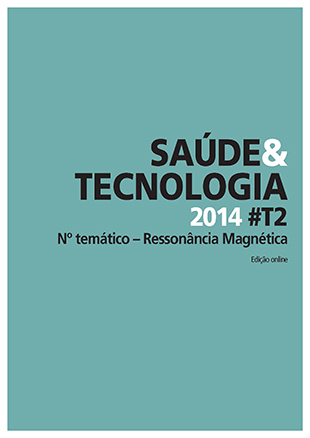Physiological effect of caffeine in neurological studies based on Susceptibility Weighted Imaging (SWI)
DOI:
https://doi.org/10.25758/set.1074Keywords:
SWI, Caffeine, CNR, Veno-vasculatureAbstract
Introduction – The present study investigates the effect of caffeine on the contrast-to-noise ratio (CNR) in SWI images. Purpose – Data analyses included qualitative and quantitative measures, specifically the CNR pre and post-ingestion, in magnitude and MIP images. The structures evaluated were the internal cerebral vein, superior sagital sinus, torcula, and middle cerebral artery. Methodology – Twenty-four healthy volunteers were enrolled in the study. All the volunteers were caffeine-free for 24h prior to the test. SWI images were acquired before caffeine ingestion and post-ingestion of 100 ml of coffee. The volunteers were divided into four groups of six subjects and evaluated sequentially (15, 25, 30, and 45 min after caffeine). High-resolution T2* weighted 3D GRE (SWI) sequence was acquired on the axial plane on a 1.5 T (Siemens Avanto) whole body scanner using the manufacturer’s standard head coil and the following parameters: TR=49; TE=40; FA=15; FOV=187x230; matrix=221x320. Statistics were performed with GraphPad Prismâ and image analysis with Osirixâ. Results and Discussion – We verified that signal alterations and contrast differences were predominant in venous structures and not significant in white matter, CSF, and the middle cerebral artery. The CNR values between pre and post-caffeine ingestion in magnitude and MIP images in an internal cerebral vein (p<0.0001) and in magnitude images of superior sagittal sinus and tórcula showed significant differences in CNR. There were no significant differences between groups evaluated at different times after the ingestion of caffeine. Conclusion – We speculate that caffeine can be used as a cost-effective, safe, and easy-to-administrate contrast agent on SWI images.
Downloads
References
Reichenbach JR, Venkatesan R, Schillinger DJ, Kido DK, Haacke EM. Small vessels in the human brain: MR venography with deoxyhemoglobin as an intrinsic contrast agent. Radiology. 1997;204(1):272-7.
Haacke EM, Mittal S, Wu Z, Neelavalli J, Cheng YC. Susceptibility-weighted imaging: technical aspects and clinical applications, part 1. AJNR Am J Neuroradiol. 2009;30(1):19-30.
Reichenbach JR, Haacke EM. High-resolution BOLD venographic imaging: a window into brain function. NMR Biomed. 2001;14(7-8):453-67.
Santhosh K, Kesavadas C, Thomas B, Gupta AK, Thamburaj K, Kapilamoorthy TR. Susceptibility weighted imaging: a new tool in magnetic resonance imaging of stroke. Clin Radiol. 2009;64(1):74-83.
Reichenbach JR. Recent advances in SWI. In Cost B21 - Physiological Modelling of MR Image Formation, Szeged (Hungary), 18th March 2005. Available from: http://www.die.upm.es/costb21/docs/MeetingMar2005/WG1_Szeged_Pres.pdf
Sedlacik J, Helm K, Rauscher A, Stadler J, Mentzel HJ, Reichenbach JR. Investigations on the effect of caffeine on cerebral venous vessel contrast by using susceptibility-weighted imaging (SWI) at 1.5, 3 and 7 T. Neuroimage. 2008;40(1):11-8.
Chen Y, Parrish TB. Caffeine's effects on cerebrovascular reactivity and coupling between cerebral blood flow and oxygen metabolism. Neuroimage. 2009;44(3):647-52.
Araújo MC. Efeito de estimulantes na marcha e postura humana: caso da cafeína [Dissertation]. Porto: Faculdade de Engenharia da Universidade do Porto; 2011. Portuguese
Alves RC, Casa S, Oliveira B. Benefícios do café na saúde: mito ou realidade? [Health benefits of coffee: myth or reality?]. Quím Nova. 2009;32(8):2169-80. Portuguese
Rosset A, Spadola L, Ratib O. OsiriX: an open-source software for navigating in multidimensional DICOM images. J Digit Imaging. 2004;17(3):205-16.
Edelstein WA, Bottomley PA, Hart HR, Smith LS. Signal, noise, and contrast in nuclear magnetic resonance (NMR) imaging. J Comp Assist Tomogr. 1983;7(3):391-401.
Haacke EM, Hu C, Parrish TB, Xu Y. Whole brain stress test using caffeine: effects on fMRI and SWI at 3T. Proc Intl Soc Magn Reson Med. 2003;11:1731.
Downloads
Published
Issue
Section
License
Copyright (c) 2022 Saúde e Tecnologia

This work is licensed under a Creative Commons Attribution-NonCommercial-NoDerivatives 4.0 International License.
The journal Saúde & Tecnologia offers immediate free access to its content, following the principle that making scientific knowledge available to the public free of charge provides greater worldwide democratization of knowledge.
The journal Saúde & Tecnologia does not charge authors any submission or article processing charges (APC).
All content is licensed under a Creative Commons CC-BY-NC-ND license. Authors have the right to: reproduce their work in physical or digital form for personal, professional, or teaching use, but not for commercial use (including the sale of the right to access the article); deposit on their website, that of their institution or in a repository an exact copy in electronic format of the article published by Saúde & Tecnologia, provided that reference is made to its publication in Saúde & Tecnologia and its content (including symbols identifying the journal) is not altered; publish in a book of which they are authors or editors the total or partial content of the manuscript, provided that reference is made to its publication in Saúde & Tecnologia.







